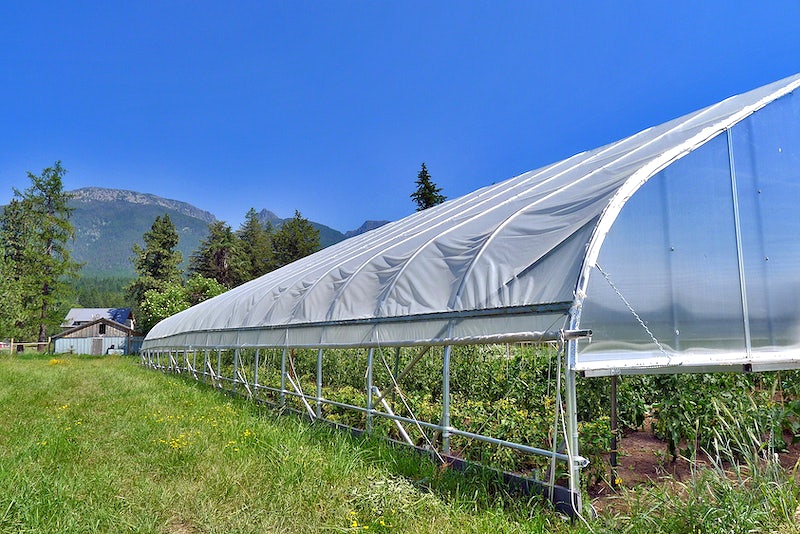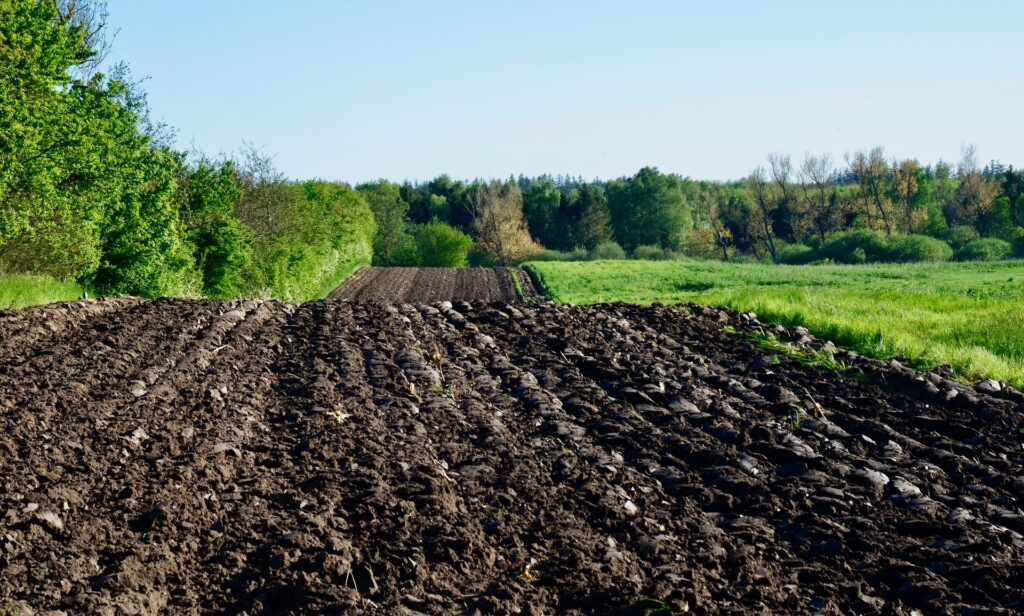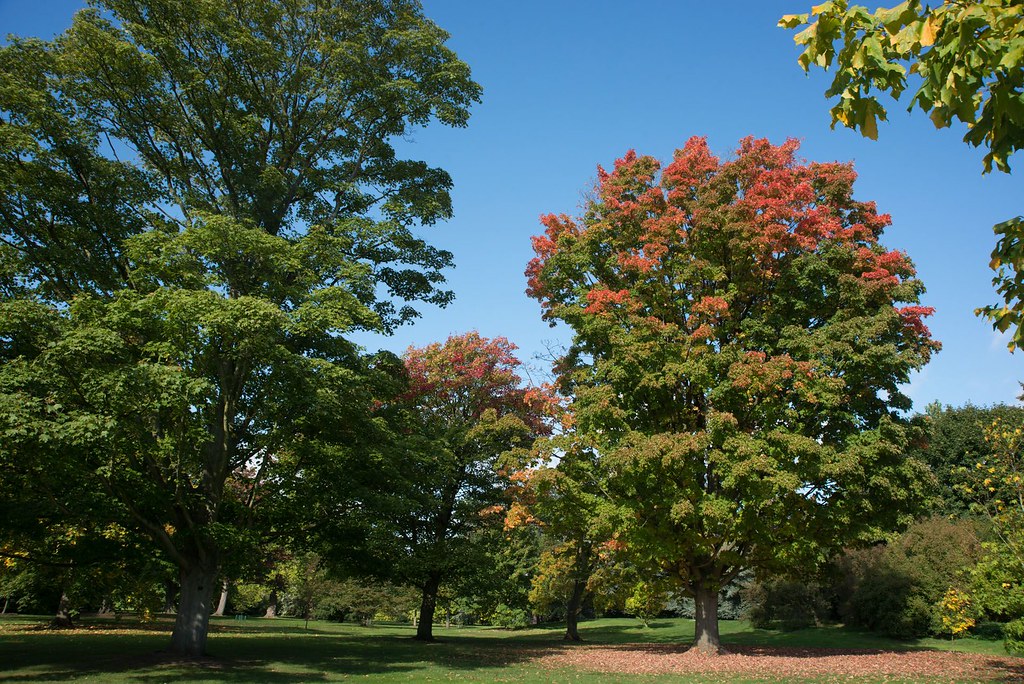High Tunnel vs. Greenhouse
Are you trying to decide which is better for your grow operation, high tunnel vs. greenhouse?
The one you choose will depend on the space you have available, the type of plants you’re growing, and your climate.
There are customizable size and shape configurations to fit your needs, whether you’re a grower with large crops or a home gardener.
High tunnels are used to give you a head start on starting plants and extend the growing season for crops. They are also used to protect plants from harsh weather conditions.
Greenhouses offer climate-controlled grow space for year-round growth.
What Is A High Tunnel
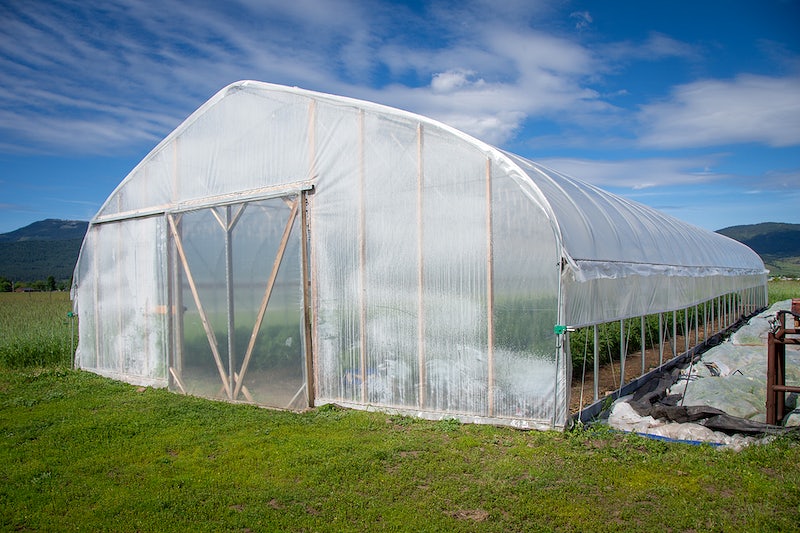
High tunnels are becoming increasingly popular with farmers to extend the growing season and produce higher-quality fruits, vegetables, and plants.
A high tunnel system is a type of unheated covered grow area. It is typically made out of bent and shaped metal or PVC pipes that form the frame and shape. These frames are then covered with plastic or shade cloth fabric to enclose the structure. The sides can be rolled up to let heat out and fresh air in.
This allows hot air to escape, which helps keep the plants inside from getting too hot.
High Tunnel Features
The high tunnel design is intended to maximize light exposure and minimize heat loss.
One of the best features of high tunnels is the adjustable and removable sides.
High tunnels usually have a soil floor.
Farmers can use these to manipulate the temperature, humidity, ventilation, and light to create the perfect conditions for their plants.
This results in higher yields and better quality fruits and vegetables.
What is a Greenhouse
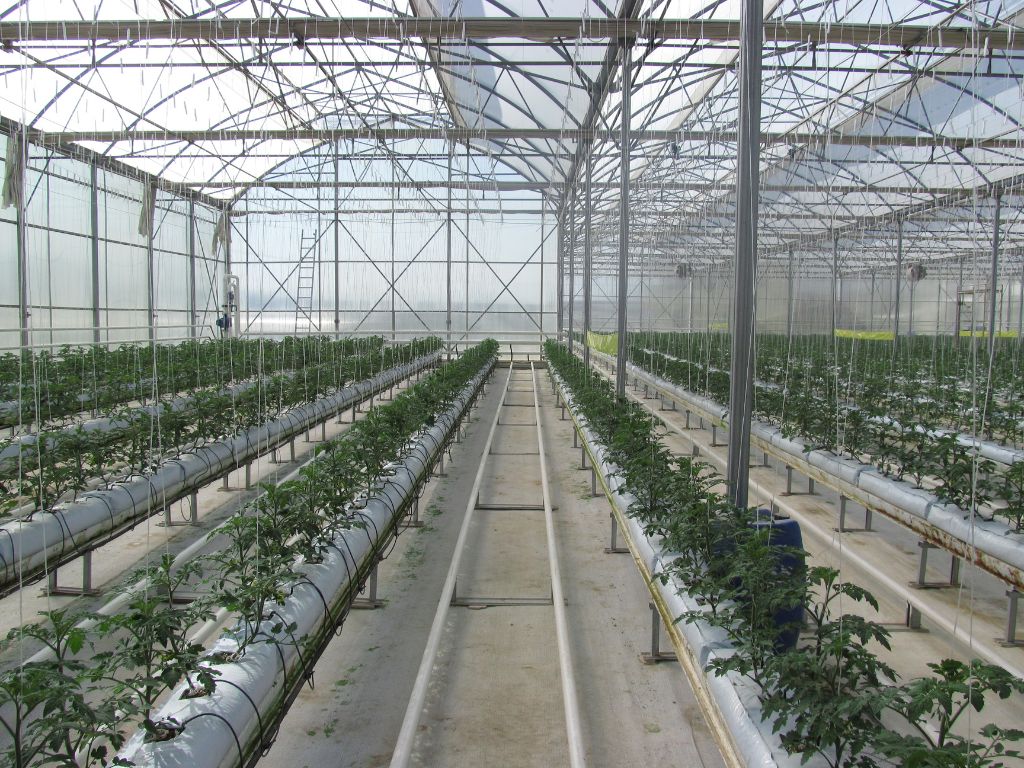
A greenhouse is a building made of glass or plastic where plants are grown. The roof and walls are made of clear or translucent materials that transmit light, heat or both.
The glass or plastic allows sunlight to enter the greenhouse, which makes the inside of the greenhouse warm.
This is good for plants because they need sunlight to grow.
The windows can be opened manually or electronically.
Heating is also frequently used to keep temperatures at optimal levels and prevent crop frost damage during cold spells.
Greenhouses are used to grow plants year-round. They can also be used to protect plants from harsh weather conditions.
These structures are used to create an environment for controlled growing plants.
Greenhouses are often used in colder climates, where they allow the growth of plants that would otherwise be unable to survive outside their native zone.
Greenhouses are typically used for commercial purposes by large farms and nurseries. However, small-scale home gardens have increased over time as people try new ways of growing food closer to where they live.
Greenhouse Features

Greenhouses are permanent structures built from solid materials, sturdy frames, and proven design and engineering.
They are more insulated than high tunnels, have thicker walls, and can be easily adapted to multiple applications.
Standard greenhouses keep the growing area protected
space can handle the coldest temperatures
The Difference Between a High Tunnel and a Greenhouse
The main difference between a greenhouse and a high tunnel is the application.
High tunnels differ from greenhouses in a few key ways.
A high tunnel is an unheated grow space. It is typically made out of bent and shaped metal or PVC pipes that form the frame and shape. These frames are then covered with plastic or shaded cloth fabric. The sides can be rolled up to let heat out and fresh air in.
High tunnels are usually more adjustable than greenhouses and have ventilation openings on the sides and top. This allows hot air to escape, which helps keep the plants inside from getting too hot. They also have a soil floor,
A greenhouse system is an enclosed space, a small structure building made of glass or plastic panels. The roof and walls are made of clear or translucent materials that transmit light, heat or both.
Greenhouses typically have a concrete or other type of hard floor. This helps keep the roots of the plants cooler and allows for better drainage.
The Benefits of a High Tunnel
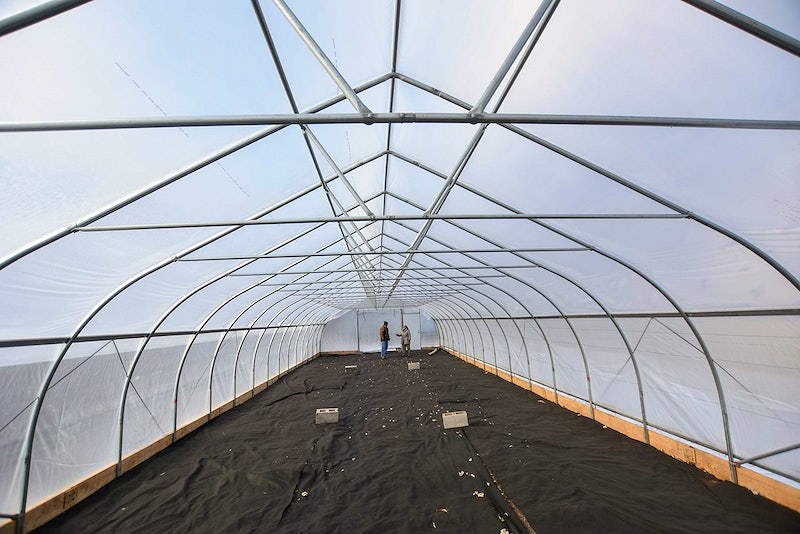
The main benefit of using a high tunnel is the extended growing season and controlled environment it provides.
Another benefit of high tunnels is that they are used to protect plants from extreme weather conditions and seasonal temperature swings. These structures can provide shelter from wind, hail, and heavy rain.
High tunnel benefits include:
- Season extension to extend your growing season
- Increased yields
- Helps you extend the growing season
- Convertible as temperatures change
- Protects crops from the elements.
- Allows for tractors and tillers to fit inside
- ventilation
Disadvantages of High Tunnels
There are also some disadvantages to using high tunnels that you should consider.
High tunnels are unheated, which means they rely on passive solar heat to warm the air inside. They also have fewer ventilation options than greenhouses, making it more difficult to control the climate inside. Inclimate weather such as snow storms or strong winds that could damage the crop you’re growing in your farm plot at home!
Disadvantages of High Tunnels
- They are not heated in winter and do not often have a heater.
- Since they are lightweight, they must be anchored correctly.
- They are not as well insulated as green houses.
- Can be labor-intensive to build and assemble.
The Benefits of a Greenhouse
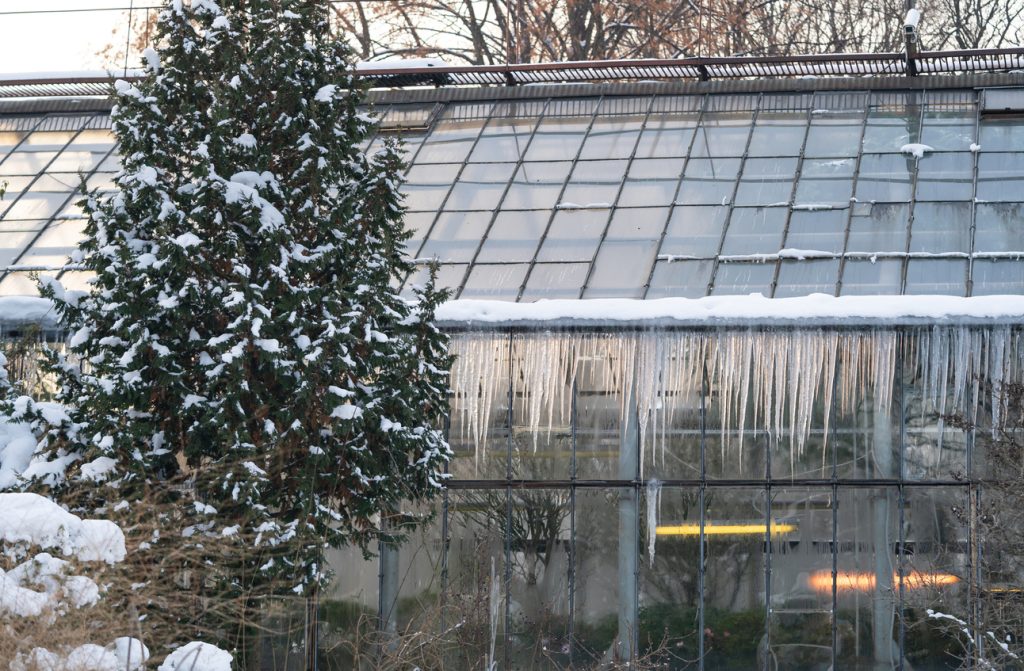
You’ve probably heard that greenhouses are better than high tunnels for cold applications. But what exactly makes them so great?
- Temperature is easier to control inside the greenhouse with a good ventilation system than outside in open air or under plastic sheeting like what’s used inside of
- better climate control, controlled environment, and protected growing space
- Greenhouses are easier to maintain.
Disadvantages of Greenhouses
There are some disadvantages to using greenhouses. The main objection to greenhouses is the cost. They can be expensive to construct and maintain.
- Greenhouses are more expensive to build than high tunnels.
- They also require a lot of energy to operate since they need to be kept at a consistent temperature and humidity level.
- Because they are enclosed environments, greenhouses can be more susceptible to pests and diseases.
- Greenhouses can produce high levels of condensation, which can lead to mold and mildew problems.
Cost: High Tunnel vs. Greenhouse
High tunnels are usually less expensive to build but may require more maintenance than a traditional greenhouse.
They can be used for growing vegetables and fruit, or as hoop houses for growing warm-weather plants such as tomatoes, peppers and lettuce.
The cost depends on your chosen size and materials, but it’s generally cheaper to build than a green house.
Plastic panels are less expensive than glass and aluminum or steel frames, but when you add in heating, cooling, lighting and other expenses, the cost can add up quickly.
Which is right for you?
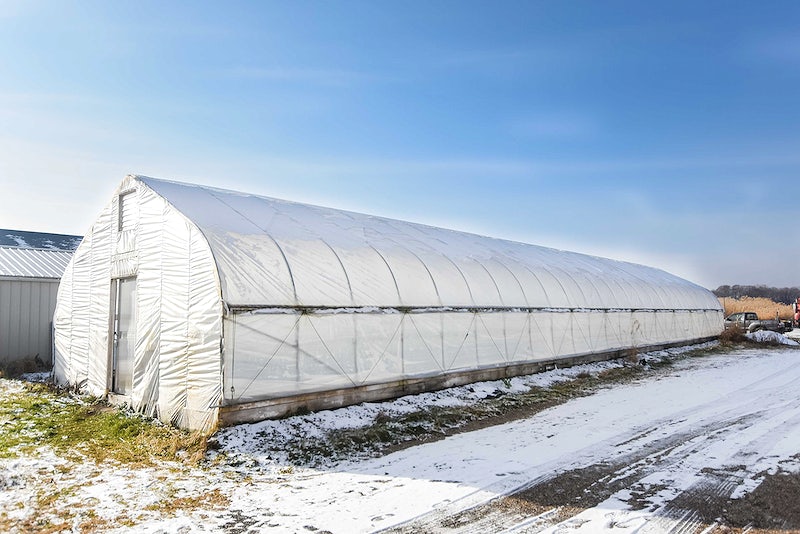
So, which one is right for you? That depends on a lot of factors.
The good news is that both options are great ways to get started with growing your food. The high tunnel is an excellent choice if you’re looking to start a vegetable garden in your area.
They only work when the temperature is above freezing, and you will need to choose a site with plenty of sunlight.
Make sure that your high tunnel has good drainage. A well-drained site will help prevent waterlogged soil, which can lead to problems with plant growth.
Greenhouses are more expensive to heat and run but offer longer growing periods and extended use.
The main advantage of greenhouses is that you can use year-round.
Ensure you have room for a greenhouse. They require space and infrastructure to build.
If we had to choose between them, we would go with the high tunnel for warmer climates since it offers more flexibility in terms of size and placement options. In colder climates we would choose a greenhouse.
high tunnel vs greenhouse

